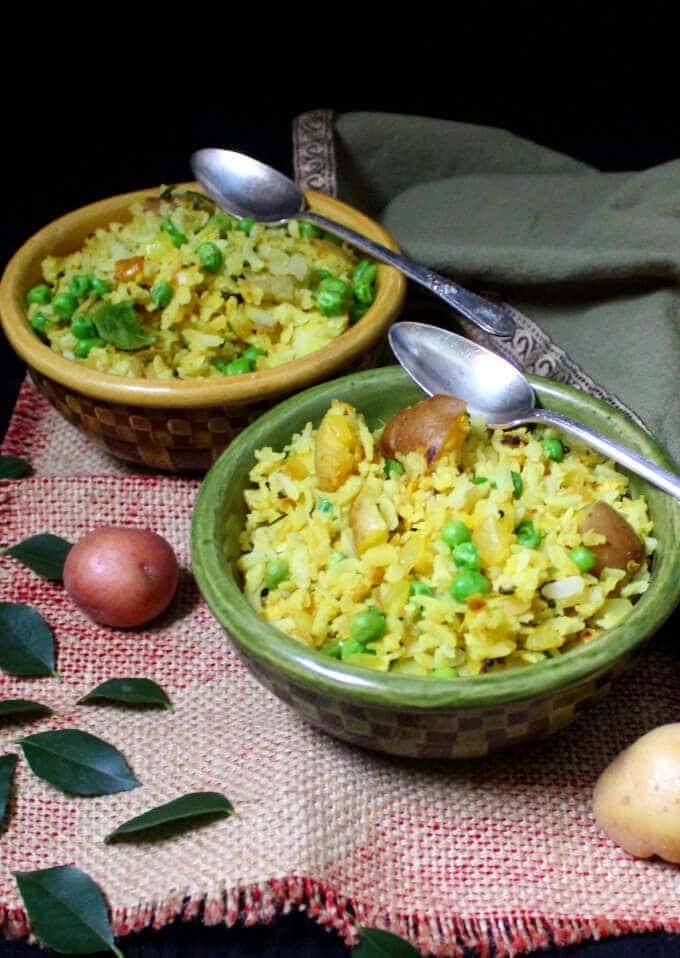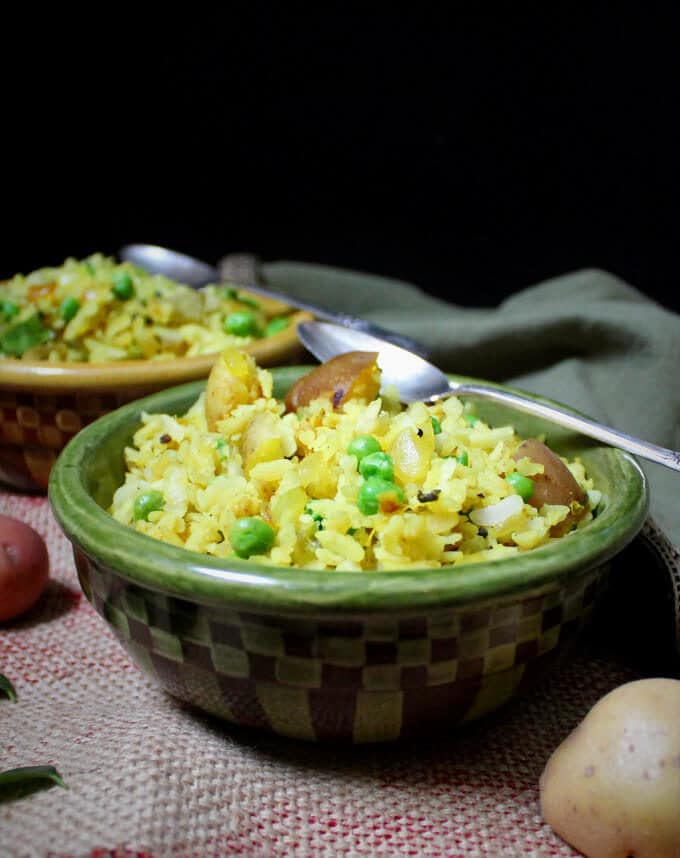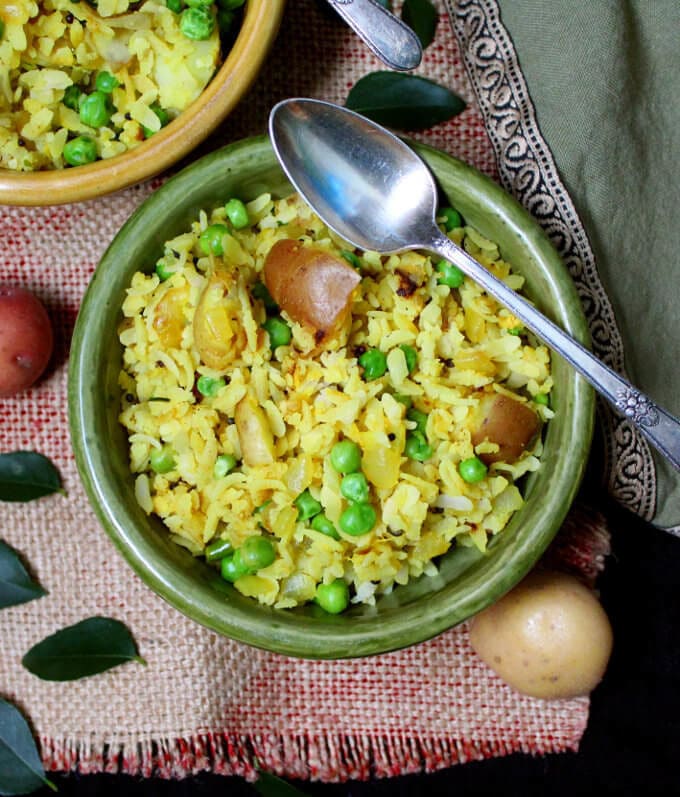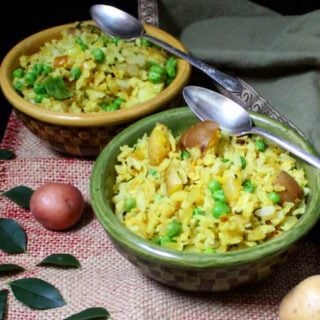You might also like to make these recipes for Indian breakfasts, including rava upma, besan chilla and sabudana khichdi. The fragrance of Kande Pohe cooking is enough of an incentive to make this recipe. The round, black mustard seeds, popping in hot oil along with fresh, green curry leaves, onions, ginger and chopped chili peppers, smell so good, they will bring friends and family running to the breakfast table. But just wait until they – and you – get a taste of this classic Indian breakfast. For Indian expatriates like me, particularly those of us from the populous yet oddly somnolent state of Maharashtra on the country’s west coast, Kande Pohe are a delicious memory of childhood breakfasts or after school snacks. In our Bombay home, my father would rustle up this dish in minutes for an easy and nutritious breakfast. When we heard the steel spatula going clackety-clack in the kadhai, or Indian wok, and the fragrance of onions in oil, we knew – to our delight – what was on the menu. In the early days after we adopted our son, Jay, we found out that Kande Pohe topped his list of breakfast favorites too, partly because he too remembered eating it in his early life. He loves it so much that even when we travel in India and have the luxury of a hotel breakfast buffet, he’ll make a beeline not for the pastries or the pancakes or the waffles or any of the other “kid friendly foods” on offer. Instead, if it’s available, he’ll pile his plate high with Kande Pohe. Besides being the best sort of comfort food, Kande Pohe is also a naturally healthy recipe. It’s gluten-free and entirely vegan. I buy bagfuls of the flattened rice each time I make my trip to the Indian grocery store and it’s on the menu at least once a week. Even Desi, who didn’t really cotton to it at first (although there is a Tamil version of this recipe, Aval Upma), loves it now. Check to get new recipe updates by email.
Don’t let the words “flattened rice” put you off – this is not really an exotic ingredient, at least not by much. It’s just regular rice that’s been flattened into thin flakes. This makes the rice both easier to digest, and it also makes the individual grains – or flakes – more absorbent, so they can soak up all of those delicious spices and other flavors you add into them. Poha is available in different thicknesses – for this dish, you want the thick poha. The wonderful thing about poha is, it doesn’t really require a lot of cooking. Just a quick spritz of water is enough to make it tender enough to eat and add to this dish. This also cuts down cooking time considerably, making it a go-to breakfast for busy days. Once you try it, you’ll be hooked.
Try these Indian recipes next:
Misal, the ultimate Bombay breakfast and street food Chhole Bhatura or Chana Bhatura Easy Aloo Paratha Idli Instant Gluten-free Masala Dosa
Recipe card




